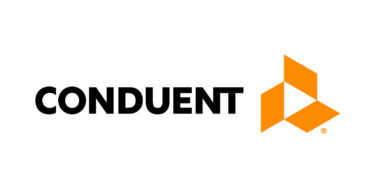When it comes to educating and informing healthcare providers (HCPs) about drug therapies, pharmaceutical companies have historically depended upon their sales forces. However, as HCPs are increasingly stretched for time, a growing number of practices have stopped seeing sales reps. In fact, only 44% of HCPs are currently considered accessible to sales reps, down from 80% in 2008, according to ZS Associates report.
As the access issue becomes more widespread, pharma marketers are shifting their marketing mix to include other channels for reaching HCPs. A recent study on healthcare marketing by Deloitte Consulting showed that nearly 93% of surveyed pharma marketers use digital marketing tactics (including digital ads, websites, mobile apps, and social media) to reach HCPs. Notably, the percentage of marketers using tactics such as social media (60%) and digital sales materials (59%) far outranked more traditional marketing tactics such as journal ads (34%) and direct mail (38%).
Eli Phillips Jr., who leads the Insights & Engagement team at Cardinal Health Specialty Solutions, recently shared some of his thoughts on the changing landscape of HCP engagement.
What’s driving the change in how healthcare providers engage with the pharma industry and learn about new therapies?
EP: As therapeutics have shifted to precision medicine and specialty pharmaceuticals, healthcare providers have made a corresponding shift to become more specialized, as evidenced by the development of subspecialties. This has led to a preference for more targeted content. Concurrently, HCPs are more frequently using digital channels to access medical information. In fact, studies show that 85% of physicians use social media at least once a week to explore health information. These trends have changed the landscape of provider engagement. Today, successful campaigns must address three factors that require a deep understanding of the target audience: (1) the content of message, (2) the channel used to transmit the message, and (3) the targeting methods used to identify the most appropriate audience. A failure to consider any one of these factors will result in a less impactful message.
What have you learned about effectively engaging HCPs?
EP: First, the more a message feels like an advertisement, the less likely it is to be accepted by healthcare providers. Physicians are generally lifelong learners; they are excited by advancements in their profession and want to provide the best care possible based on the latest evidence. They want to know how a particular therapy or indication will benefit their patients and their unique practice setting. A message that educates and provides clinically relevant information will be the best received.
Second, time is precious for healthcare providers and the result is a small window of opportunity to get your message in front of them. To a large extent, HCPs drown out information overload by refusing to review content from untrusted sources. This is why it’s imperative that content is focused on information relevant to the provider and delivered from a trusted name in healthcare.
Third, today’s healthcare providers have a strong interest in how medications are used in the real world and the outcomes they produce. There’s a growing sentiment among practitioners that clinical trial data has limitations resulting from the controlled conditions in which trials are conducted. These gaps can be overcome by supplementing clinical trial data with real-world evidence which embraces patient variability. Providers feel this type of information is more personal and more representative of the patients they see in practice.
As HCPs struggle to make time for everything on their plate, some patient care decisions are falling to advanced practice providers (APPs), such as physician assistants and nurse practitioners, and to pharmacists. What implications does this have for pharma brand teams that are trying to engage decision makers?
EP: APPs have become an integral part of almost every practice setting. Cardinal Health’s research shows that 74% of oncologists already use APPs in their practices and more than 60% are responsible for supportive care decisions. At the same time, the role of pharmacists is changing. Once pharmacists were primarily dispensers of medicine, but today they work directly with patients to inform and educate them about their therapy.
Pharma brand teams need to understand these stakeholders and the influence they have—and they need to know how the message should be adapted to speak to that audience. APPs are highly skilled healthcare professionals with a different set of needs than the physicians who oversee their work. A message crafted for a physician audience should not necessarily be the same as a message for a nurse, pharmacist, or physician’s assistant.
As your team engages with HCPs and other influencers, what tools are proving most effective?
EP: Microsites and newsletters have continued to increase in popularity, particularly where the content is interesting and relevant to the target healthcare providers. Short videos can also capture the attention of providers and make the message more personal. Web-based programs and case-based videos that feature a key opinion leader have been especially well received by healthcare providers as they allow HCPs to digitally socialize with others in their specialty while learning how closely aligned their treatment decisions are.










